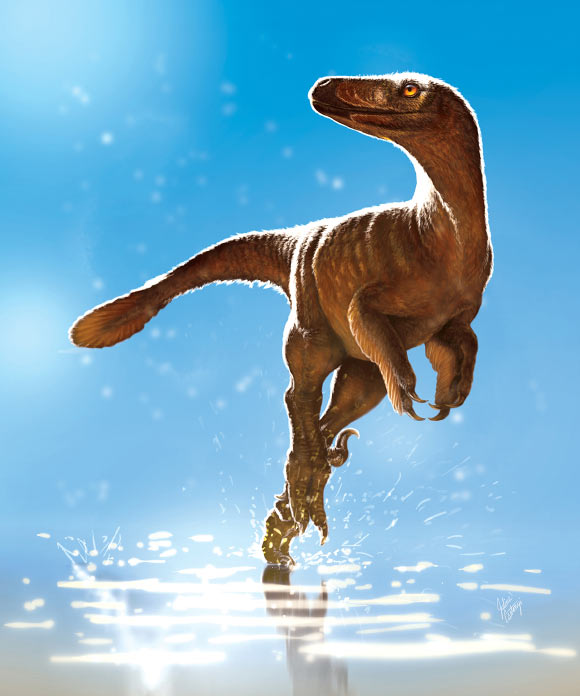Paleontologists have announced the discovery of two new troodontid dinosaur species, Latenivenatrix mcmasterae and Stenonychosaurus inequalis, based on remains found in Alberta, Canada.
In 2014, University of Alberta paleontology student Aaron J. van der Reest discovered an intact troodontid pelvis in Dinosaur Provincial Park, leading him to take a closer look at previously collected troodontid cranial bones from southern Alberta.
“That’s when everything fell together and we were able to confirm that there were in fact two different species — named Latenivenatrix mcmasterae and Stenonychosaurus inequalis — in the Dinosaur Park Formation, instead of just one,” van der Reest said.
Up until then, the vast majority of troodontid specimens found in North America had been classified as Troodon formosus.
“Troodon formosus has been found from Mexico all the way to Alaska, spanning a 15 million year period — a fantastic and unlikely feat,” van der Reest said.
“The hips we found could ultimately open the door for dozens of new species to be discovered.”
According to van der Reest and his co-author, University of Alberta Professor Philip Currie, Latenivenatrix mcmasterae and Stenonychosaurus inequalis roamed the Earth around 72 million years ago during the Campanian, the fifth of six ages of the Upper Cretaceous epoch.
“Latenivenatrix mcmasterae is the largest of the troodontids ever found anywhere in the world, standing nearly 6.5 feet (2 m) at the head and close to 11.5 feet (3.5 m) long,” van der Reest said.
“It’s about 50% larger than any other troodontids previously known, making it one of the largest deinonychosaurs (raptor-like dinosaurs) we currently recognize.”
For van der Reest, naming a new dinosaur species has been an especially powerful experience. He has named his discovery Latenivenatrix mcmasterae in honor of his late mother, Lynne (McMaster) van der Reest, whose encouragement was essential for his pursuit of paleontology.
“Having brought my first find full circle, from discovery to publishing my research three years later, has been really incredible. I can’t think of a better way to honor her memory,” he said.
The new species are described in a paper published in the Canadian Journal of Earth Sciences.
_____
Aaron J. van der Reest & Philip J. Currie. Troodontids (Theropoda) from the Dinosaur Park Formation, Alberta, with a description of a unique new taxon: implications for deinonychosaur diversity in North America. Canadian Journal of Earth Sciences, published online August 8, 2017; doi: 10.1139/cjes-2017-0031








